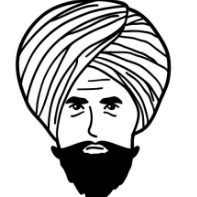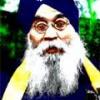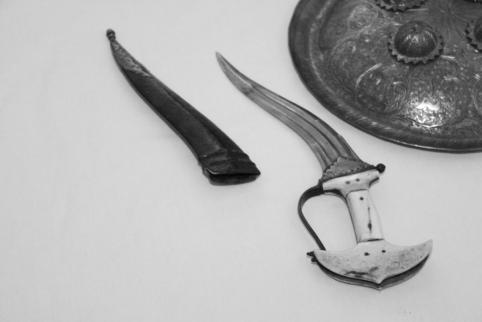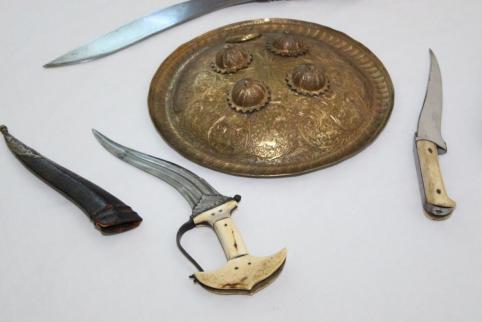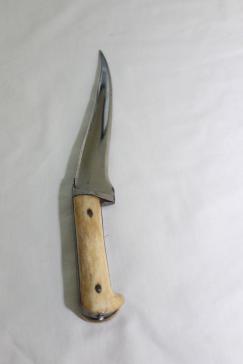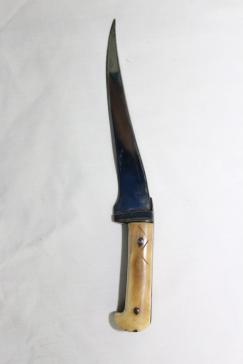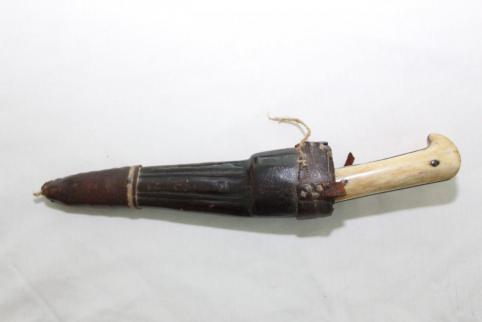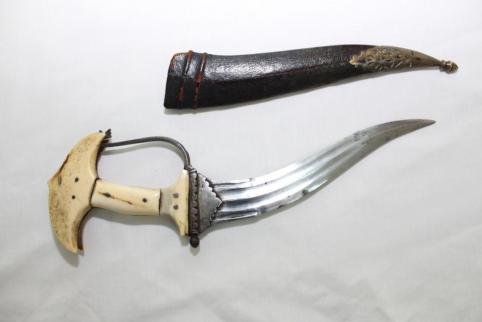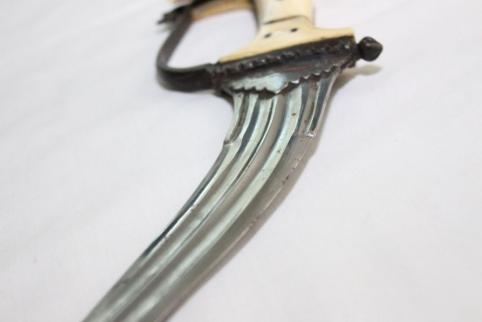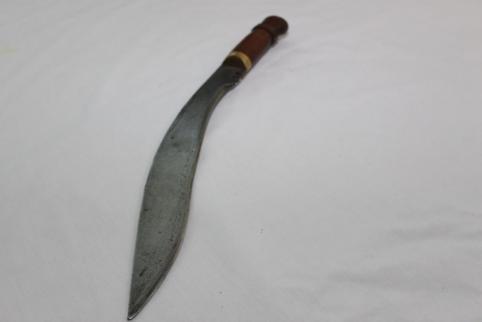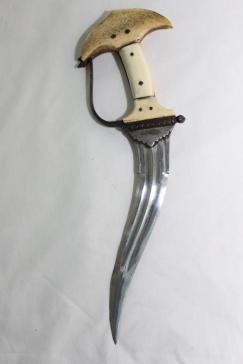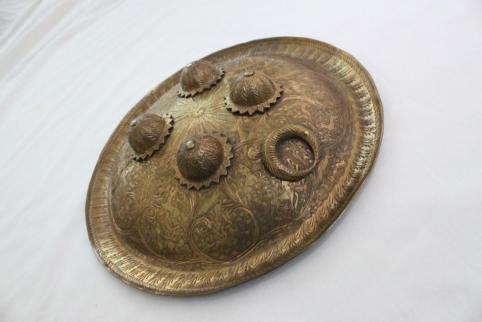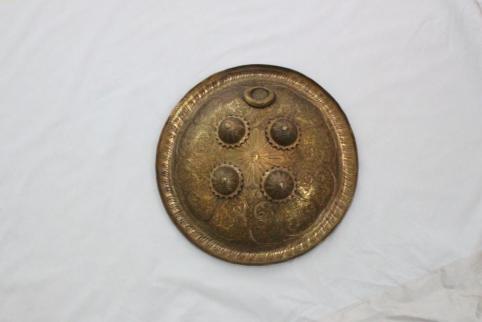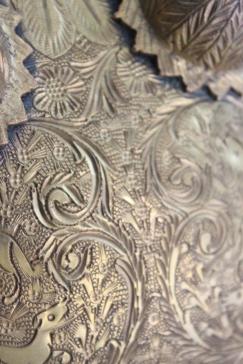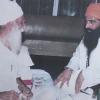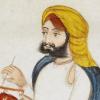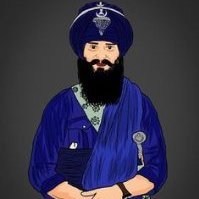Leaderboard
Popular Content
Showing content with the highest reputation on 11/24/2013 in all areas
-
Who else can say their Guru sacrificed themselves protecting another people's right to practise their faith? Dhan Guru Tegh Bahadur Ji. Also remember those three brave GurSikhs who embraced shaheedi with their Guru, Bhai Mati Das Ji, Bhai Sati Das Ji and Bhai Dayal Ji.4 points
-
baba deep singh je was jathedar of taurna dal nihangs, that doesnt mean taksal came from nihangs it wasnt buddha dal that said go make a taksal it was guru nje who ordered baba deep singh je to runt he taksal that they started at damdama sahib they also told bhai mani singh je to run one buddha dal has nothin to do with the creation of taksal baba je was leader of both groups in those times there was only one maryada, as time progressed and with british coming new things were introduced, and maryada changed, and many jathai formed but taksal did not come out of buddha dal it was started directly by guru sahiban himself chatka is not the bujjar kureight as even sant kartaar singh je says on katha on ikirtan.com but they also say to eat it for taste is wrong the rule for chatka is oinly eat when in dharm yudh, fighting whith no other food around, and then saying sat sri akal and cutting the head off in 1 swift hit bhula chuka maf4 points
-
2 points
-
Why is it written ੴ? Is the numeral Ik used because you can't mistranslate it? It is simply 1. Guru Nanak is telling us everything is one. Why does the oora have a long hora like shape on? Why isn't the rest of oankaar written?2 points
-
Film Shooting to be banned inside Golden Temple by SANJEEV SINGH on NOVEMBER 23, 2013 In a meeting held yesterday, Singh sahibs have taken important decisions on few issues. Film shooting will be entirely banned inside Golden Temple premises. However, Religious documentaries can be allowed, but will require a prior written permission from SGPC. Another important decision has been taken regarding some Gurudwara management committees allowing chairs or benches to be installed for the elderly or differently abled inside Gurudwara premises.. Terming this practice as disrespect of Guru Granth Sahib, Jathedar Gurbachan Singh said, Gurudwara committees can install chairs benches outside the Gurudwara hall and not inside the hall where Guru Granth Sahib is installed. In another decision, Gurudwara management committees cannot have Patit sikhs (those who cut hair) as member of the management. Only Amritdhari and Sabat Soorat Sikhs can be members of Gurudwara management. Issuing fresh guidelines regarding Nagar Keertan, Jathedar Akal Takhat Sahib, Singh Sahib Giani Gurbachan Singh said that it has come to notice that in some Nagar keertans, the Palki of Guru Granth Sahib is left behind and whole Sangat goes ahead. Terming it as disrespect, he said, Only Panj piyare, Panj Nishanchi and Gatka party should move in front of Guru Granth Sahib. Rest of the Sangat should be behind Guru Granth Sahib and they should move singing Gurbani all the way. Other Singh sahibs present where Giani Iqbal Singh, Jathedar Takhat Patna Sahib, Giani Mal Singh , Jathedar Takht Keshgarh Sahib, Giani Jot inder Singh, Hazur Sahib, Giani Jagtar Singh , Head Granthi, Harmandir Sahib. Source - http://www.kirpan.com/2013/11/23/film-shooting-to-be-banned-inside-golden-temple/2 points
-
Guru Granth Sahib Ji to be translated into 13 languages Tribune News Service Ludhiana, June 18 The Guru Granth Sahib Seva Mission has taken it upon itself to translate Guru Granth Sahib into 13 prominent Indian languages so that people across the country can follow the path shown by the Gurus. The translation and publication of the granth is being undertaken so that the translated versions are ready for publication and distribution on the eve of the of 300 years of installation of the holy book as the Guru of the Sikhs in 2008. Mr Gurinderpal Singh Dhanaula, chief sevadar of the mission, said many people from other parts of the country had urged them to undertake this exercise as the reach of the granth was universal and they were facing problems in reading the holy book. He said they were encouraged when the granth was successfully translated into Urdu by Baba Ravinderpal Singh of Talwandi Sabo. They then decided that they would approach prominent regional scholars to get the granth translated into 13 prominent languages. He said the granth would be initially translated into Hindi, Assamese, Bengali, Gujarati, Marathi, Kannada, Oriya, Tamil, Telugu, Sindhi, Malayalam and Sanskrit. The next phase would be to get it translated into major foreign languages, he added. Work on the Oriya and Tamil versions was underway and was being done by Dr N.C. Panda of the Sambhalpur University and Kannan R. of the Madurai University, respectively. Mr Dhanaula said initially they would get 5000 copies each of the granth printed in Urdu and Hindi while 1,000 copies each would be available in rest of the regional languages. Besides, they would also get 5 lakh copies of Japji Sahib published in Urdu and Hindi while 1 lakh each would be available for the people in other regional languages. Commenting on the financial implications of such a massive project, he said while the SGPC has not even bothered to reply to their letters, the Delhi Sikh Gurdwara Management Committee chief Paramjit Singh Sarna has assured all possible help while offers were pouring in from various religious and social organisations across the country and abroad. Similarly, Capt Amarinder Singh had also promised help for the project and the Central Government too has assured that they would chip in financially and otherwise, he added. He said others who are helping them include former Gurdwara Kesgarh Sahib Jathedar Bhai Manjit Singh, Dr Kharak Singh, Dr Brijpal Singh, Dr Dharam Singh, Dr Kehar Singh, Prof Jasbir Singh, Founder Principal, Sahibzada Jujhar Singh Gurmat Missionary College, Chaunta, and others. He also added that they had written to various universities across the country to recommend names of scholars who could undertake the task. He said boarding and lodging arrangements for the visiting scholars had been made in SAS Nagar.2 points
-
Many Christians are selling Christianity to these people literally by paying them to become Christians. These type of people are lazy and hang on to anything that will provide them with living expenses. Christians have the ability to pay others to join initially because they have the funds. Some of the sheep are not smart so they just fall for the Adam and eve magical show. Majority of the people join Christianity to make their lives better not spiritually, but worldly. You make successful business partners has friends and become part of a community that will help you financially. In return be our slave by joining our religion. Let's face it, Punjabis are suckers when it comes to free stuff. The free langar is not enough for them anymore and now they want the institutions to pay them for just being part of a religion. Not going to happen in Sikhi. Sikhi is about quality and not quantity.2 points
-
He literally slapped the host on 80's terrorism question by saying that they were not ugarvadi.. Shocking to hear that from ex-dgp. Very nice guy !2 points
-
sorat(h) mehalaa 5 || gur pooraa bhaettiou vaddabhaagee manehi bhaeiaa paragaasaa || koe n pahuchanehaaraa dhoojaa apunae saahib kaa bharavaasaa ||1|| apunae sathigur kai balihaarai || aagai sukh paashhai sukh sehajaa ghar aana(n)dh hamaarai || rehaao || a(n)tharajaamee karanaihaaraa soee khasam hamaaraa || nirabho bheae gur charanee laagae eik raam naam aadhhaaraa ||2|| safal dharasan akaal moorath prabh hai bhee hovanehaaraa || ka(n)t(h) lagaae apunae jan raakhae apunee preeth piaaraa ||3|| vaddee vaddiaaee acharaj sobhaa kaaraj aaeiaa raasae || naanak ko gur pooraa bhaettiou sagalae dhookh binaasae ||4||5|| Soraṯẖ mėhlā 5. Gur pūrā bẖeti▫o vadbẖāgī manėh bẖa▫i▫ā pargāsā. ਭੇਟਿਓ = ਮਿਲਿਆ ਹੈ। ਵਡ ਭਾਗੀ = ਵੱਡੇ ਭਾਗਾਂ ਨਾਲ। ਮਨਹਿ = ਮਨ ਵਿਚ। ਪਰਗਾਸਾ = (ਆਤਮਕ ਜੀਵਨ ਦਾ) ਚਾਨਣ। ਹੇ ਭਾਈ! ਵੱਡੀ ਕਿਸਮਤ ਨਾਲ ਮੈਨੂੰ ਪੂਰਾ ਗੁਰੂ ਮਿਲ ਪਿਆ ਹੈ, ਮੇਰੇ ਮਨ ਵਿਚ ਆਤਮਕ ਜੀਵਨ ਦੀ ਸੂਝ ਪੈਦਾ ਹੋ ਗਈ ਹੈ। Ko▫e na pahucẖanhārā ḏūjā apune sāhib kā bẖarvāsā. ||1|| ਸਾਹਿਬ = ਮਾਲਕ। ਭਰਵਾਸਾ = ਭਰੋਸਾ, ਸਹਾਰਾ ॥੧॥ ਹੁਣ ਮੈਨੂੰ ਆਪਣੇ ਮਾਲਕ ਦਾ ਸਹਾਰਾ ਹੋ ਗਿਆ ਹੈ, ਕੋਈ ਉਸ ਮਾਲਕ ਦੀ ਬਰਾਬਰੀ ਨਹੀਂ ਕਰ ਸਕਦਾ ॥੧॥ Apune saṯgur kai balihārai. ਕੈ = ਤੋਂ। ਬਲਿਹਾਰੈ = ਸਦਕੇ। ਹੇ ਭਾਈ! ਮੈਂ ਆਪਣੇ ਗੁਰੂ ਤੋਂ ਕੁਰਬਾਨ ਜਾਂਦਾ ਹਾਂ, Āgai sukẖ pācẖẖai sukẖ sahjā gẖar ānanḏ hamārai. Rahā▫o. ਆਗੈ ਪਾਛੈ = ਲੋਕ ਪਰਲੋਕ ਵਿਚ, ਹਰ ਥਾਂ। ਸਹਜਾ = ਆਤਮਕ ਅਡੋਲਤਾ। ਘਰਿ = ਹਿਰਦੇ-ਘਰ ਵਿਚ ॥ (ਗੁਰੂ ਦੀ ਕਿਰਪਾ ਨਾਲ) ਮੇਰੇ ਹਿਰਦੇ-ਘਰ ਵਿਚ ਆਨੰਦ ਬਣਿਆ ਰਹਿੰਦਾ ਹੈ, ਇਸ ਲੋਕ ਵਿਚ ਭੀ ਆਤਮਕ ਅਡੋਲਤਾ ਦਾ ਸੁਖ ਮੈਨੂੰ ਪ੍ਰਾਪਤ ਹੋ ਗਿਆ ਹੈ, ਤੇ, ਪਰਲੋਕ ਵਿਚ ਭੀ ਇਹ ਸੁਖ ਟਿਕਿਆ ਰਹਿਣ ਵਾਲਾ ਹੈ ॥ ਰਹਾਉ॥ Anṯarjāmī karnaihārā so▫ī kẖasam hamārā. ਅੰਤਰਜਾਮੀ = ਸਭ ਦੇ ਦਿਲ ਦੀ ਜਾਣਨ ਵਾਲਾ। ਕਰਣੈਹਾਰਾ = ਪੈਦਾ ਕਰਨ ਵਾਲਾ। ਸੋਈ = ਉਹ ਹੀ। ਹੇ ਭਾਈ! (ਮੈਨੂੰ ਨਿਸ਼ਚਾ ਹੋ ਗਿਆ ਹੈ ਕਿ ਜੇਹੜਾ) ਸਿਰਜਣਹਾਰ ਸਭ ਦੇ ਦਿਲ ਦੀ ਜਾਣਨ ਵਾਲਾ ਹੈ ਉਹੀ ਮੇਰੇ ਸਿਰ ਉਤੇ ਰਾਖਾ ਹੈ। Nirbẖa▫o bẖa▫e gur cẖarṇī lāge ik rām nām āḏẖārā. ||2|| ਆਧਾਰਾ = ਆਸਰਾ ॥੨॥ ਜਦੋਂ ਦਾ ਮੈਂ ਗੁਰੂ ਦੀ ਚਰਨੀਂ ਲੱਗਾ ਹਾਂ, ਮੈਨੂੰ ਪਰਮਾਤਮਾ ਦੇ ਨਾਮ ਦਾ ਆਸਰਾ ਹੋ ਗਿਆ ਹੈ। ਕੋਈ ਡਰ ਮੈਨੂੰ ਹੁਣ ਪੋਹ ਨਹੀਂ ਸਕਦਾ ॥੨॥ Safal ḏarsan akāl mūraṯ parabẖ hai bẖī hovanhārā. ਸਫਲ ਦਰਸਨੁ = ਜਿਸ (ਪ੍ਰਭੂ) ਦਾ ਦਰਸਨ ਜੀਵਨ-ਮਨੋਰਥ ਪੂਰਾ ਕਰਦਾ ਹੈ। ਅਕਾਲ ਮੂਰਤਿ = ਜਿਸ ਦੀ ਹਸਤੀ ਮੌਤ ਤੋਂ ਰਹਿਤ ਹੈ। ਹੋਵਨਹਾਰਾ = ਸਦਾ ਹੀ ਜੀਊਂਦਾ ਰਹਿਣ ਵਾਲਾ। (ਹੇ ਭਾਈ! ਗੁਰੂ ਦੀ ਕਿਰਪਾ ਨਾਲ ਮੈਨੂੰ ਯਕੀਨ ਬਣ ਗਿਆ ਹੈ ਕਿ) ਜਿਸ ਪਰਮਾਤਮਾ ਦਾ ਦਰਸ਼ਨ ਮਨੁੱਖਾ ਜਨਮ ਦਾ ਫਲ ਦੇਣ ਵਾਲਾ ਹੈ, ਜਿਸ ਪਰਮਾਤਮਾ ਦੀ ਹਸਤੀ ਮੌਤ ਤੋਂ ਰਹਿਤ ਹੈ, ਉਹ ਇਸ ਵੇਲੇ ਭੀ (ਮੇਰੇ ਸਿਰ ਉਤੇ) ਮੌਜੂਦ ਹੈ, ਤੇ, ਸਦਾ ਕਾਇਮ ਰਹਿਣ ਵਾਲਾ ਹੈ। Kanṯẖ lagā▫e apune jan rākẖe apunī parīṯ pi▫ārā. ||3|| ਕੰਠਿ = ਗਲ ਨਾਲ। ਲਗਾਇ = ਲਾ ਕੇ ॥੩॥ ਉਹ ਪ੍ਰਭੂ ਆਪਣੀ ਪ੍ਰੀਤਿ ਦੀ ਆਪਣੇ ਪਿਆਰ ਦੀ ਦਾਤਿ ਦੇ ਕੇ ਆਪਣੇ ਸੇਵਕਾਂ ਨੂੰ ਆਪਣੇ ਗਲ ਨਾਲ ਲਾ ਕੇ ਰੱਖਦਾ ਹੈ ॥੩॥ vadī vadi▫ā▫ī acẖraj sobẖā kāraj ā▫i▫ā rāse. ਕਾਰਜੁ = ਜ਼ਿੰਦਗੀ ਦਾ ਮਨੋਰਥ। ਆਇਆ ਰਾਸੇ = ਰਾਸਿ ਆਇਆ, ਸਿਰੇ ਚੜ੍ਹ ਗਿਆ ਹੈ। ਉਹ ਗੁਰੂ ਬੜੀ ਵਡਿਆਈ ਵਾਲਾ ਹੈ, ਅਚਰਜ ਸੋਭਾ ਵਾਲਾ ਹੈ, ਉਸ ਦੀ ਸਰਨ ਪਿਆਂ ਜ਼ਿੰਦਗੀ ਦਾ ਮਨੋਰਥ ਪ੍ਰਾਪਤ ਹੋ ਜਾਂਦਾ ਹੈ। Nānak ka▫o gur pūrā bẖeti▫o sagle ḏūkẖ bināse. ||4||5|| ਸਗਲੇ = ਸਾਰੇ ॥੪॥੫॥ ਹੇ ਭਾਈ! ਮੈਨੂੰ ਨਾਨਕ ਨੂੰ ਪੂਰਾ ਗੁਰੂ ਮਿਲ ਪਿਆ ਹੈ, ਮੇਰੇ ਸਾਰੇ ਦੁੱਖ ਦੂਰ ਹੋ ਗਏ ਹਨ ॥੪॥੫॥ Taken from srigranth.org http://gurmatsangeetproject.com/Recordings/DharamSinghZakhmi3/Apunay%20Satgur%20Kay%20Baleharray.mp32 points
-
2 points
-
If disabled sangat do bring their own wheelchairs then i am 100% sure that no-one would deny them. I also think that Akal Takht Sahib should give detailed report rather than one line with such exemption. Our folks are crazy, regardless of their good health they would try to find any fake reason to get a chair. Example is that whenever i travel, i see punjabis misusing wheelchair request from airlines. Most of the request is not health reason but a reason that it is hard for them to switch flights, language barrier and so on.2 points
-
Thanks for reminding us about the phenomenal decisions and actions of Bhai Mati das, Sati das and Bhai Dayal ji. Truly incredible, and we should stop, pause and contemplate on how they made those decisions with such certainity.2 points
-
I think disabled people should be accommodated since they are physically unable to sit on ground. But others should not be allowed to sit on benches and chairs. New trend has started since the last decade where so many Gurdwaras in the west are installing chairs and benches in the hazuri of Maharaj. Chairs are there for disabled people but 99% of the people I have seen using them are not even disabled. They are normal and physically have no problem sitting on ground, yet they sit on chairs. Look at this picture: As you can see the women in the back sitting on those chairs are normal and from the looks of it are doing chuglis in the Hazuri of Maharaj while only one woman(3rd from left) is disabled which is why she is sitting on a wheelchair. But the other ones are just sitting on chairs for no reason. This is why chairs and benches should not even be in the Hazuri of Maharaj. Perfectly normal people start to take advantage of these facilities. Only the real disabled people should be sitting on chairs.2 points
-
When I say mind I mean a collection of thoughts and life experiences that they have gathered from birth. Each individual has different life experiences and different thoughts as they are brought up differently that causes them to form different principles from each other. We accept they looked different because of their varied genetic make up but why can't we accept they had different thoughts, temperament and ethics? As well as differences there were also similarities.2 points
-
Appears organisers of 1 June now have gone against Sikh Council UK. Different youth groups need to come out publicly and nip the 1 June in the bud and those supporting it!2 points
-
2 points
-
Just been re reading Sangat Singh's The Sikhs in History. He explains very well how cunning the Brahmin leadership have been trying to destroy the Khalsa by various methods since Guru Gobind Singh ji's time. Since 1947 the Namdharis and other cults have been under the influence of Indian leaders and political parties, the Namdharis hold senior positions in the Congress. Well worth a read below http://www.scribd.com/doc/94117101/The-Sikhs-in-History-by-Dr-Sangat-Singh2 points
-
A lot of maryadas are oral tradition. That is correct, and as we know oral traditions have the tendency to be flawed. Now, what is the main method by which the Budha Dal and Nihangs in general pass their history/beliefs etc?? Oral Tradition is a big part of what they do! This is not intended at all to be critical of any particular Rehat- the point I am trying to make is be critical of all Rehats- if they don't live up to the teachings of the Guru, it is likely they are not derived from the Guru.2 points
-
JKK VJKF Das is selling the following shastar sahib.. I will be open to offers within reason. The following piece are true fighting pieces & puratan. email me @ singh_the_end@hotmail.co.uk Kukri- £80 Very honest fighting solid fighting kukri piece. Wood handle with excellent balance with a weight facing towards the tip. A perfect hacking piece. Comes with no scabbard.Total length just under 18inches.(19th century) Khanjarli "The Khanjarli, one of the most sought after dagger in the Indian weaponry. It is characterized by its strongly re-curving blade and wide lunette shaped pommel."This one is a very fine and large example, with multi-fullered blade and swollen tip,forged from most likely wootz (Damascus) steel underneath the polished blade. The iron guard has a monster shaped tip. The lunette shaped pommel and grips are bone, riveted to the tang with six rivets. Comes complete with original scabbard. Very rare piece to add to any collection. (19th century) Total length 13inches. - £650 Dhal A very fine heavy chiselled brass shield with hunting scenes. Complete with orginal padding on the inside on the back. 10inches in diameter.(Late 19th century) -£250 Pesh kabz dagger A solid fighting pesh kabz dagger with a slight curvature tilting forward. Bone handle with a chromed blade. Very sharp and solid piece.Comes complete rare rhino leather scabbard. Total length 11.5 inches.(19th century) -£150 Akaal Sahai1 point
-
Waheguru Ji Ka Khalsa !! Waheguru Ji Ki Fateh !! Gururoop Sadh Sangat jio . How to Sharpen Puratan Shastars?1 point
-
I was reading in des pardes of recent that this rally is being hosted for two dates one by the youth and one by the elders - both clashing dates booked by both - i hope it doesn;t turn out to be farcial - please confirm here if anyone knows this is true or is it just des pardes punjabi paper hype??1 point
-
The Sikhs of Kerala by Dr. J. JAYAN In the early twentieth century, the so-called lower caste people in Kerala, India, raised their voice against the caste discrimination and untouchability imposed by the Hindus Brahmins and their religion. They tried to establish their identity in the community through the anti-Hindu agitations. In this circumstance, many so-called Sudras had converted to Christianity and Islam. The Christian and Muslim missionary activities led to a tremendous socio-political and economic change in the lives of the subaltern classes. Meanwhile, some socio-political leaders of the so-called lower caste people called the people not to get converted into the religions like Christianity and Islam and asked the people to embrace Sikhism, Buddhism or Jainism. In the year 1936, a group of people from Kerala, impressed with the philosophy of Sikhism, decided to convert to Sikhism. This paper is an attempt to study the Sikh conversions in Kerala. In the beginning of the 20th century, the so-called lower castes vehemently opposed the caste system and unapproachability in the so-called Hindu religion. But, they failed to overcome the stigma of untouchability. In this circumstance, the socio-political reformers of the so-called oppressed communities studied the ideologies of other religions and called for the need of conversion. In general, the term conversion is related with the Jews and Christians that "points to a phenomena that are associated with personal and communal metamorphosis. Sociologists examine the social and institutional aspects of traditions in which conversion takes place. They consider social conditions at the time of conversion, important relationships and institutions of potential converts, and characteristics and processes of the religious group to which people convert. Sociologists also focus upon the interaction between individuals and their environmental matrix and on relations between the individuals and the expectations of the group in which they are involved." Again they argued, "Some kind of crisis precedes conversion. The crisis may be religious, political, psychological, or cultural or it may be a life situation that opens people to new options. During the crisis, myths, rituals, symbols, goals and standards cease to function well for the individual or culture, thus creating great disturbance in the individual's life." The issues related with conversion point out the fact that faith is not the core factor on conversion but it is related with identity construction. In the socio-political realm, conversion strengthens the suppressed class and organizes them to fight against discrimination and oppression. So far as Kerala was concerned, Buddhism and Jainism had a very strong influence in the Kerala society even in the end of 6th century A.D. These religions advocated the principles of equality. The society was almost free from socio-political discriminations. After the migration of Vedic Brahmins, the concept of class and caste entered into the Kerala society. The higher caste maintains certain distance from the Avarnas. An Ezhava must keep a distance of sixteen feet from the Brahmins. Violation of the rules led to severe punishment. The higher caste people in Kerala did not allow the so-called lower castes even to walk on the roads near by the temples. In the first half of the 20th century, Christian missionaries and social reformers like Sri Narayana Guru and Sahotharan Ayyapan intensified their socio-religious activities in Kerala. They called for a new model of socio-political system in which all the individuals are free from caste discrimination and unapproachability. They also gave importance to western education, and asked the government to open all the roads near by the temples to the Avarnas. In this regard, the people of Vaikom started an agitation for the right to walk through the roads near the Siva temple in Vaikom. Vaikom is a small town in the district of Kottayam, Kerala. The lower caste people such as Thiyas, Pulayas, Ezhavas and Nadars were prohibited to use the roads near the temple. In the year 1924 the so-called lower caste people started an agitation near the Vaikom Temple. T. K. Madhavan, George Joseph, Govindan Channar, Mannathu Pathmanaba Pillai, Chittedathu Sanku Pillai, E. V. Ramaswamy Naiyakkar and Ayyamuthu Gounder are some of main leaders of the Vaikom Movement. It received nation-wide attention. Sardar K. M. Panikar the minister of the Sikh Maharaja of Patiala discussed the Vaikom Movement with Sardar Mangal Singh and also with the Shiromani Gurdwara Prabanthak Committee. Due to the request of the SGPC, twelve Akalis from Punjab came to Vaikom and provided free food to the agitators of the Vaikom Movement. The Akalis called the people to overcome the nexus of casteism. Meanwhile, Gandhi asked the Akalis not to participate in the Vaikom Movement and called the Hindus to do the job. Due to the political pressure the Akalis left the Vaikom movement. The people of Kerala, inspired by the Sikh philosophy, continued their strike in Vaikom. After the departure of Akalis, the Sikhs continued their contacts with the People of Kerala. The leader of Akalis in Vaikom Movement, Sardar Lal Singh, also continued the relationship with the Keralites. Meanwhile, the Brahmins allowed the Christians and Muslims, who got converted from Hinduism, to walk freely in the roads near by the Hindu temples. While addressing the public in connection with the Vaikom Movement in Nagercoil, E. V. Ramaswamy Naiker said that "Mohomedans and Christians are allowed to pass through the public roads near Vaikom Temple, but the Ezhavas, Pulayas and Parayas who are Hindus are prohibited from going through those roads. If those men become Christians and Mohomedans, the Travancore Government is prepared to allow them to go along such roads." The Ezhava leaders in the Vaikom Movement like K. Aiyappan and C. Kesevan argued that it was better to leave Hinduism rather than to fight for the temple entry. "Madhavan, one of the leaders of the Vaikom Movement came under increasing fire from the more militant fellow Ezhavas like K. Aiyappan and C. Kesevan, who considered temple entry to be an irrelevant issue and wanted instead to break away from the Hindu fold." Thus they realized that, unless the problem of casteism was eliminated, there could be no major change in the life-style of common person. The year 1936 is one of the crucial periods in the history of India. It is in this year many anti-Vedic and anti-Brahmanic organizations decided to change their religious beliefs and practices from the so-called Hindu religion. Thus, "in June 1936 separate conferences of Mangs in Maharashtra and Thiyas in Cochin resolved to leave Hinduism." In the same year, Master Tara Singh came to Kerala and addressed the public about the significance of Sikh religion. He said "... You have decided to leave from Hindu religion. This has attracted the people of Punjab like us. I was appointed (by SGPC) for studying the needs of the people in this area. .... I did not have any vested interest to introduce my religion to you. It is the duty of each and every Sikh to serve the helpless and broken people. The Sikhs are offering their service to you. If you have converted into Sikh religion, it is a great pleasure to us. If so, the flag of Guru Nanak and Guru Gobind Singh shall be reached to another extent of India and none other than that. Politically, we did not have any similarities. The victory of the Sikhs in Malabar is also your victory. Their failure is also your failure. The people of Punjab like us became proud of your victory and your failure led to pain ... So, in this circumstance, our aim is to help in this crisis situation. If you have converted into Sikh religion, we will do all the help to get free from this slavery. Suppose if you have not converted to Sikhism, even though we will do all the help as we did in the Vaikom Movement. Sikhism is not a religion as instructed by other religions. It is a movement full of service." The debate on Sikhism got wide publicity. Some people came forward to convert into Sikh religion. The Malayalam weekly Mathurboomi reported the news as follows. "Sardar Kartar Singh, who was staying in Travancore to preach Sikh religion and also to establish Sikh Gurdwaras, was the head of this group. Mr. K.C. Kuttan and some other people are also in this group. In Cochin, Dr. Thaiyel hosted the guests. They will convert to Sikh religion on 12th April 1936." Thus, K. C Kuttan, father of the former Chairman, Municipality of Chertala - the late K. P. Kuttan - E. Ragavan, Krishan, Kannathu Kesavan Madhavan, along with All India Sikh Missionary Volunteers went to Amritsar and embraced Sikh religion. Thus K. C. Kuttan became Jaya Singh, E. Ragavan as Harnam Singh, Krishnan as Renjith Singh, Ragavan as Kripal Singh, Madhavan as Uday Singh and Baskaran as Bhupender Singh. They are the first converted Sikhs in the Kerala community. The Travancore government used the term Ezhava Sikhs' to refer to the newly converted Sikhs. The socio-political and religious practices of the higher caste have disturbed the physical and emotional life of the lower castes. Through conversion, the Ezhavas overcame the psychological crises and enjoy the socio-religious equality, personal dignity and freedom. Again on 15th June 1936, "25 people got converted into Sikh Religion in the residence of Sardar Jaya Singh (formerly K.C.Kuttan), Chertala. The function was started at midnight. Professor Gurdas Singh was specially appointed by the Shiromani Gurdwara Prabandhak Committee for the Sikh missionary activities in Kerala, the ex-secretaries of SGPC Professor Hari Singh, Sardar Jay Singh, Sardar Uday Singh arranged the function. Five persons were needed to perform the religious conversion ceremony. Even though, the programme was conducted after 11 P.M., a good number of people gathered in the function hall. The girl who converted to Sikh religion will be called Narendra Kaur. She is nearly 12 years old. She is the first Sikh lady in Kerala." The Sikh Mission has started an office at Ernakulam. Due to their efforts a good number of people near Vaikom such as Maravanthuruthu, Karappuram, Muhamma and Ranee converted into Sikh religion. Some newspapers reported that around 300 people, and again some papers reported that around 800 people got converted into Sikh religion. The conversion to Sikh religion made a radical change and possible implications in socio-political realm along with other developments such as Vaikom Movement and Temple Entry Movements. Thus, on 12th November 1936, the Maharaja of Travancore, Sri Chitra Tirunal issued a proclamation that all the roads, tanks, wells, and schools of Travancore state were opened to all classes irrespective of caste. This declaration is called as Temple Entry Proclamation'. The Malayala Manorama newspaper reported that immediately after the Temple Entry Proclamation, the Malayalees who converted to Sikh religion lost their interest in the new religion and reconverted into Hindu religious fold. However, only five or six families in Kerala vehemently stood for the new faith. Thus, people like Bhubender Singh, Karthar Singh, Kripal Singh, Renjith Singh and Bhagawan Singh stood firmly in the Sikh fold. They lived and dressed like Sikhs in the society. They followed the rules and regulations of the Sikh Panth. In an interview with the reporter of Malayalam Daily, Mangalam, on 26th November 2000, Bhubender Singh enunciated about his tremendous life as a Sikh. In his younger age, he was fascinated with Akalis. They came to Kerala to participate in the Vaikom Movement. Through the Akalis, he and his friends came to know that in Sikh religion there is no caste and class discrimination. This new philosophy attracted the Malayalee youths. At this time, Ambedkar's son felt ill due to paralysis. Ambedkar came to Paanavalli (near Vaikom) along with his son to meet Ayurvedic Doctor Krishan for treatment. Ambedkar frequently came to the Ayurvedic centre to know his son's health. Meantime, he spent some time with the Volunteers of the Vaikom Movement and the Akalis. Similarly, the Akalis also kept touch with Ambedkar. The Malayalee youths observed this cordial relationship. In this same period, Ambedkar openly declared that if you don't get self respect and dignity in your own religion you should get out of it. The announcement to embrace any other religions, made a big change in the society of Kerala. The so-called lower caste people in Kerala also desired to get free from the clutches of untouchability and caste discriminations. In this circumstance, some youths in Kerala decided to join in Sikhism. They have contacted the Akalis and explained to them their willingness to embrace Sikhism. The Akalis contacted the Sikhs in Punjab. Due to their influence, the Shiromani Gurdwara Prabanthak Committee sent Missionaries to Kerala. Through the teachings of the Sikh Missionaries the so-called lower caste people found new hope and future in their life. Thus on 14th April 1936 they went to Amritsar and converted into Sikh fold. After the religious conversion, they were admitted to Shaheed Sikh Missionary College where they learnt Gurmukhi. After that, they were admitted to Gujranwala Khalsa College (now in Pakistan) for a Sikh Missionary Course. After completing the course they came back to Kerala. Meanwhile, the entire situation changed in Kerala. The government of Travancore permitted all the so-called lower castes to enter into the Hindu Temples. This declaration changed the mentality of the community. Thus, the people have lost their interest to join into other religions. At this juncture, the contact between the Sikhs in Punjab and converted Sikhs in Kerala also became very feeble. In this circumstance, the converted Sikhs decided to organize a meeting. In it, they have collected some money and decided to send a representative to Punjab. Thus, once again Bhuvender Singh has got the chance to visit Amritsar. He went to Amritsar with great expectations. But, unfortunately nobody came to meet him. He went to Gujranwala and contacted the Principal of Khalsa College in which he studied. But he did not get any help as he expected. As per the advice of the principal he decided to find a job in Punjab. The financial crisis is also one of the reasons to seek a job in Punjab. Thus, he joined in the military service. This decision affected his contacts with Sikh friends in Kerala. After that, the converted Sikhs in Kerala did not organize any meetings. Slowly, some people returned to the Hindu fold. The people who have visited Punjab decided to stand in the Sikh religion. It is possible to say that caste discrimination and untouchability is the main reason for this conversion. The daughter of Bhuvender Singh explained the horrific incidents faced by her father in the childhood. When Bhaskaran (after conversion he came to be known as Bhuvender Singh) was a school boy, his parents brought an umbrella to him. One rainy day, he went to the school by holding the umbrella. On the way to the school, the elite class saw Bhaskaran holding an umbrella. They immediately fetched the umbrella from him and warned him not to use it. Even though, the caste Hindus returned the umbrella in the evening; the boy was disappointed by this pitiful action. Similarly, he and his sisters were not allowed to enjoy the prayers and songs played in the Hindu temples. They were forced to sit far away from the temple ground. Bhuvender Singh married a Malayalee Sikh girl Mahender Kaur (santha) from Cherai. They had six children. Their first child was named as Indra Kaur. She is working as a primary school teacher. Second daughter Prema Kumari is running a Government retail Shop. Their son Rajendran is working as a Doctor. Jethender Singh is working in the PWD. Ajitha Kumari is working in the Department of Health. And Sohan is working as a teacher in the Nattakam Polytechnic. Bhuvender Singh's daughters and sons married under Hindu Ezhava married customs. When the community shrank he found very difficult to find matches. Again, while Bhupender Singh was working in Army, his relatives in the native village were entrusted the duty of taking care of the education of the children in Kerala. Often it happened that the relatives changed the names of the children when they were admitted in the school. Bhupender Singh gave to his children the names like Rajender Singh, Ajith Kaur and Sohan Singh, but their relatives registered their name in the school as Rajendran, Ajitha Kumari and Sohan respectively. Bhuvendeer Singh died in the year 3rd July 2004 at the age of 92. With the help of the Sikh Mission, Bhuvender Singh, Kirpal Singh and Renjeet Singh actively worked for the spread of Sikh religion. According to Ranjeet Singh, after embracing Sikhism, they have returned to Travancore. There they started Kerala Sikh Mission and started missionary work in Kerala. "Many persons embraced the Sikh Dharma, but the mission failed mainly because the true spirit of the religion and the Sikh way of life were not imbibed into the people embracing the religion. The language being the main hurdle, the people were not able to understand and appreciate the fundamentals of Sikhism, history of Gurus and their teachings and the Gurbani." After coming back to Kerala, S. Ranjeet Singh started Guru Nanak Hindi Vidyalaya at the Ranee Village, Pathanamthitta District and also continued the missionary work for some time. But "he was forced to relinquish and had to start some other work for his livelihood due to lack of interest on the part of organizers." Due to his influence, his niece S. P. Kesavan and his family converted into Sikh religion. He changed his name as Bhagawan Singh. It is believed that he was the author of the book "Karapurathinde Yatharthiangal". Renjith Singh married a Keralite girl Surender Kaur who also had Amrit Pan. They had five children, His eldest son is Major Ajith Singh and his younger son is Capt. Lakhmir Singh. They are working in the military and one daughter is a lecturer in Guru Nanak College, Madras. Ranjeet Singh has a clear vision on Sikh Philosophy. He says "so far as I see, no person can be called a Sikh' in the true sense unless he can read Gurmukhi, he can understand Gurbani and he follows Gurbani. It will not be an exaggeration if I say that Sikhs are not made and no person can remain a Sikh unless his inner voice commands him to remain Sikh. It has been rightly put that the Sikh way of life is sharper than the sword's edge and narrower than breadth of the hair and only those can walk on the Sikh path who have toughness of steel, courage, perseverance and faith in the Gurus." Guru Granth Sahib says, "In holy company is the seeker's whole tribe saved. In holy company are one's companions, friends and family liberated" [GGS:271]. So it is possible to say that the basic idea behind the Sikh institution is to unite the scattered and broken society on the principles of courage and faith. Similarly, another converted Sikh, Karthar Singh (Achuthan Andi) - he was the father of Mahender Kaur (wife of Bhuvender Singh), in his younger age actively participated in World War II. Due to his sincere service to the nation, the Dewan of Cochin honored him with an award and gifted 12 acres of land in Malipuram in Pudu Vypin Inland in Ernakulam. But unfortunately, the major portion of the land submerged into the Arabian Sea. The family of Karthar Singh contacted the state government of Kerala for compensation. But, they did not get any help from the government. Finally, they understood that the government would not help them. So they have totally withdrawn from the case. After retirement from the military service, he joined as a Clerk in the Municipal Office at Ernakulam District. During this period, with the help of A. C. Karthikeyan, Karthar Singh published a 12 pages Malayalam booklet called Sikh Matha Prathana Manjari in the year 1941, which was distributed freely to the admirers of Sikhism. S. Kirpal Singh (Alias Sanku Ragavan) married a Brahmin girl Indrani Ammal from Madras. At that time he worked in the Military. For a long period he lived in Madras. In 1940's he started a company called "Kirpal Singh & Co., dealers of Pearl Barley, Dry Fruits, Country Drugs, etc." in Pedariar Koil Street, G. T, Madras. After retirement, Kirpal Singh spent his last days in Maravanthuruthu, near Vaikom. While in Kerala, he acted as a Block President of the Congress party and also worked as a wholesale agent of Kasthuri which was supplied by Bhalla Brothers, Ludhiyana, Punjab. He has one son and one daughter. His son Jayadev Singh practised the Sikh faith in the younger age. At that time, he joined in the military service but later he quit from the job and joined in a company run by Sikhs called (anonymous) Construction Company in Madras. There he questioned the malpractices of a Sikh worker. One day the corrupt staff pushed down the Jayadev Singh from the sun shade of a building. Fortunately, he fell on the top of a lorry which is full of lime stone powder. He escaped from the attempt of murder with burn injuries in the eyes and body. This horrific incident occurred in his life during the young age. He also experienced the problems faced by the Sikhs after the assassination of Indra Gandhi. His father Kirpal Singh was captured by a group of college students of the CMS College, Kottayam when he was in Kottayan District. Immediately, the Kerala State Police rescued him from the mob and sent him to his home in Maravanthuruthu nearly 20 K.M. away from Kottayam, with full police protection. These incidences diverted his mind from Sikh religion. Today, Jayadev Singh is a member of SNDP and he was earning money through hiring an auto rickshaw. Even though, he was living as non-Sikh, he gave the name "Kirpal Singh" to his grandson. The so-called lower caste people in Kerala realized that Sikh identity helped them to enter into any road in the state. The Mathurboomi Weekly recorded that the newly converted Sikhs walked through the roads near by the temple in Ernakulam District. "The Ezhava Sikhs leader Sardar Jaya Singh with the support of the Sikh leader Master Tara Singh and Shiromani Gurdwara Prabandhak Committee President Sardar Udam Singh walked the roads near by the Hindu temple in Ernakulam. The police who guarded the roads near the temple did not take any legal action against the Sikhs. They walked freely through the prohibited areas. The so-called lower castes welcomed the move because for the first time they thought that they were no more untouchables in the society. A very wide publicity was given to the converted Sikhs. But in some places, the police interrogated and physically tortured the Sikhs because they carried sword (kirpan) in their hands. "The Reserve Police of Alappuzha captured Jagat Singh and Theja Singh, when they were on the way to Kalavoor. The police physically tortured them and took them to Alappuzha and there they seized their kirpan. At the time of this incident, Theja Singh tried to rescue Jagat Singh. But, Theja Singh also faced the same painful experience. Later, the police returned the kirpan to its owners." This shows that even in the new socio-religious backdrop, the so-called oppressed community faced several adversities and oppressions in the society. The government of Travancore discussed whether the Sikhs can be permitted to walk through the roads near by the temples. The Travancore state confidential records reveal that Maharaja of Travancore himself carefully studied this issue and asked the secretaries to permit the Sikhs to walk through the roads near by the temples. The Private Secretary of the Maharaja of Travancore wrote a letter to the Secretary on 21st May 1936. "With reference to your telegram 20th (there) are not more than 40 roads mentioned therein covered by government order abolishing unapproachability and (the) opening roads etc. (to) all classes stop Please declare (those roads) open immediately to non caste Hindus (of the) places already open to (them) and used by Mohammedans and Christians stop Give wide publicity to this (order) nothing new order and thereby nullify the meaning and purpose of contemplated entry of Ezhava Sikhs." One of the major problems faced by the converted Sikhs in Kerala is that the government of Kerala did not categorize them into any reservation group. Some Sikh parents admitted their children in the school by filling the column of Religion and community in the application form as Sikhs. The family members of the Sikh community are respected by their neighbours. They call them to their homes in all the auspicious occasions. Similarly the Sikh families are also maintaining a good relation with the society. Today, it is very easy to identify the Malayalee Sikh's residence because the neighbours can easily guide us to their homes if we say that I want to meet the Sikh Chettan or Sikh brother. Kerala society not only witnessed the conversion of Malayalies into Sikh Religion but also the conversion of Punjabi Sikhs into Ezhava Community. One of the basic reasons to change the religion is that the Sikh parents found it difficult to get a spouse to their children from the Sikh community. In this circumstance, the youngsters from the Sikh families married from Hindu Ezhava families. Again in the early period, only one or two families from an Ezhava community converted into Sikh religion. The relatives who belong to the mother's side or from the father's side practised Hinduism. In this circumstance, Sikh parents themselves faced some problems. Indra Kaur daughter of Bhuveeder Singh told that in her childhood days, she sang Hindu devotional songs in her uncle's house. When she is in her own home, she sang Sikh devotional song, "Wahe Guruji.." Again, nowadays the children of the converted Sikh families are not wearing the Five Sikh symbols but they are ready to say that their parents belong to Sikh religion. Meanwhile, the converted Sikhs who have settled in North India are still in the Sikh Panth. Even now, the neighbours identified them as Sikhs and they are proud of it. Some of the families still giving importance to Sikh religious festivals and they exchange sweets and gifts to the neighbours. In the socio-cultural realm, the neighbours invite them to their homes to participate in the parties and ceremonies. In Kerala, there are also anecdotes of the Sikhs who were migrated from Punjab and now their children registered their names in Sree Narayana Guru Dharma Paripalana Yogam (SNDP). (Nowadays SNDP is concentrating for the welfare of Ezhava community). During 1936, so many Sikhs came to Kerala to propagate their religion and also to see the natural beauty of Kerala. Rajender Singh who belongs to Sialkot (Now Pakistan) came to Kerala along with his friends to visit Kerala during 1936's. When he was in Kerala, he was attracted by a 20 years old Malayalie Sikh girl Jana Kaur from Mannar. The uncle of Jana Kaur was also very much fascinated in this relation. They have married in Ernakulam on the principles of Sikh Religion. For a small period, Rajender Singh worked in a company in Ernakulam. Meanwhile, he got a job in the military service. So, the couple went back to Sialkot. While, they were in Sialkot, four children were born to the couple. During the India-Pakistan partition period (1947), they have decided to settle in their own village in Pakistan. But unfortunately, their own friends and neighbours became their enemy. They have attacked the residence of Rajender Singh. He tried to defend their family. But he was injured in the attack. They asked him to quit from Pakistan. Thus the entire family became refugees and migrated to Amritsar. For the survival of the family, Rajender Singh found a job in Amritsar. Then they migrated to Delhi and from there to Chennai. Finally he decided to settle in Ranee, Kerala. He loved the culture of Punjabis. Rajender Singh and his family celebrated all the Sikh festivals in Kerala with pomp and pleasure. Even though, Ranee is nearly120 km away from Ernakulam, he used to visit Gurdwara Sri Guru Singh Sabha, Ernakulam in the free times. Rajender Singh has seven children. Gurmukh Singh is in military service and now settled in Oothimudu, Pathanamthitta District. Jeeth Singh died in an accident, Gurbachan Kaur married a Punjabi boy and settled in Bhatendra, Punjab, Gurdeep Singh is living in Pathanamthitta. He loves the teachings of Sikh Gurus. Still, he never goes out of his home without turban and the five K's as instructed by the tenth Guru, Guru Gobind Singh. Dharampal Singh settled in New Delhi. Kuldeep Singh and Nirmal Kaur settled in Puvanmala, Ranee. Nirmal Kaur is living as a house wife. She married an Ezhava man. Similarly, Kuleep Singh also found his spouse from the Ezhava community. When Indra Gandhi was assassinated, the Sikhs in Kerala faced threats from the Hindu extremists. In this circumstance, Kuldeep Singh removed his turban and also cut his beard. Similarly at the time of Indra Gandhi's death, other Sikh families also came under police protection. Even though the Kerala State police and also the friends and relatives of the Malayalee Sikhs gave full moral support to them, they were scared due to death threats by the Hindu fanatics. At present, there is around twenty to twenty five Sikh families (Punjabis) settled in Kerala. Most of them are doing various businesses in Kerala. There is only one gurdwara in Kerala and it is situated in Perumanoor, Ernakulam and it is known as Gurdwara Sri Guru Singh Sabha. The foundation stone of the first gurdwara was laid by Ms. Raj Karni Devi, mother of Mr. K. L. Johar (proprietor of Sealord Hotel, Ernakulam) on 29th November 1955. This building was later acquired by the government as it fell into the area acquired for the construction of Cochin Ship Yard. A new land at Perumanoor was purchased and the foundation stone of new gurdwara building was laid on 17th January 1965 by Ms. Raj Karni Devi. Ernakulam is one of the fastest growing metropolitan in India and it is the headquarters of the Southern Naval command. So, it is possible to see good number Sikh service personals in Ernakulam. They are the floating Sikh community in the society. When the Sikh population grew, it was felt that the building of the gurdwara was not large enough to accommodate the ever increasing sangat of Ernakulam. At this juncture, the Sikh Naval personnel stationed at the Naval Base planned to reconstruct the gurdwara. Thus, the foundation stone of this building was laid by K.L. Johar on 18th November 1975, the auspicious day of the birth of Guru Nanak. The approved plan was to construct two halls of 61' X 53' on ground and first floors. The ground floor was utilized for community hall (Langar Hall), and also for homeopathic dispensary. The Darbar Hall is located at the first floor of the building. Immediately, the demolishing work of the old building was taken up. After the demolishing of the existing building, the construction of the new building was started on war footing in spite of the fact that finance was the main handicap. Members of the Management committee toured all the metropolitan cities in the country to collect donations for the building, as it was very difficult to mobilize such huge sum locally. In this regard, S. Ujjagar Singh of Bombay Auto Stores Pvt. Ltd, S. Kesar Singh of Bombay Automobiles, Vice President of the Shri Guru Singh Sabha, Lt. A.S. Minhas and Chief Advisor of the Gurdwara, LCdr. Avtar Singh has taken care of collecting funds locally and from all over the country. Due to their hard work and also with the support and contribution of the migrated Sikhs, the construction of the building was completed in April 1976 and the first Dewan on the Baisakhi day was celebrated in the new building on 13th April 1976." Nowadays, the Sikhs gather in the gurdwara every Sunday and also provide langar for the devotees. In general, it is possible to say that, through the missionary work of the SGPC, the people of Kerala came to know the spiritual and temporal aspects of Sikhism. The Sikh institution, Shiromani Gurdwara Prabandhak Committee created awareness of freedom and bravery among the subaltern classes and worked for a casteless and classless society. [Dr. J. Jayan is Research Associate at the Department of Guru Nanak Studies, Madurai Kamaraj Universty.] March 29, 2010 http://www.sikhchic.com/history/the_sikhs_of_kerala1 point
-
The 1930s and early 1940s was a great time for Sikhi parchar. The resources of the Gurdwaras had been taken from the corrupt Mahants and the SGPC and Nankana Sahib estate were seting up parchar centres in many places outside Punjab, Apart from the Ambedkar near conversion there was also mass conversions in UP and South India. I was reading a book which quoted a caste Hindu's letter sent to the congress complaining about the lakhs of lower caste Hindus who were becoming Sikhs in UP. As for the Hindu Jaats there is nothing surprising in that some may be interested in becoming Sikhs. In the 1920s the editor of Sir Chottu Ram's newspaper was a Hindu Jaat who had converted to Sikhism. In 1931 thousands of Pachhada Jats in Moradabad in UP registered themselves as Sikhs in the census of that year. In fact had it not be the alternative offered by joining the Arya Samaj, it is probable that a lot of Hindu Jaats would have become Sikhs just as the Hindu Jats of Punjab had done.1 point
-
These are known as Kachey Sikh, somebody ask her have you ever done Japji Sahib, do you understand the wordings/meanings of even Moolmantar, is there anything equivalent to Japji Sahib or even Moolmantar, leave apart complete GuruBaani - Guru Granth Sahib Jee Maharaaj. I am so sorry for this lady, there were Bhai Mati Dass Jee/Bhai Sati Dass Jee, Bhai Dayala Jee who gave there life but never left Sikhi, then there were Guru Arjan Dev Jee, Guru Tegh Nahadur Jee who saved the very existence of another religion and gave their own life, and I am so surprised what non-sense of holy spirit / Lord she is talking, nobody in her family background taught her even basics of Sikh scriptures. The title of this video is totally wrong - "She was never a Sikh". One does not become Sikh by birth, it is earned via Guru's sewa. She says in her videos - "LORD / GOD is speaking to her". The serious question is "What are Christian missionaries upto". I had a couple of them at my doorsteps last week telling me "Read these books, these are more practical". I asked them "What do you mean by more practical - as compared to what"? She said "just more practical". I told her do you have examples of Christian messanger saving the existence of other religion? Do you have an example of the concept of "Well being for everybody". Have you ever seen any Sikh missionary ringing your bells and saying - Read these books, and convert to Sikhism? She had no answers and ran away. Why are Christian missionaries in UK doing this? Why are they ringing bells on everybody's home and asking them to become Christians? If any Sikh/Hindu/Islamic missionaries ring their bells, they will sue them. Has any Sikh missionary rang their bells and asked them to become Sikhs? So many Gore Sikhs in USA joined 3HO, there have never been videos on Youtube titled "White Christians in USA convert to Sikhism", as Sikhism never has a concept of converting any body's religion forcibly. Why Christisan's want Sikhs to become Christians, don't they have faith within themselves. How many churches are left in the UK where people come? A lot of them I know have been sold to Gurudwaras as they found them loss-making units, a lot of them have become community centres. Only and only those people belonging to such religions, who have inferiority complex inside them, only and only those religions who want to publicize and keep their weak belief strong, only and only those religions who's religious morales have totally fallen down - practise the concept of publicizing "A person of religion X CONVERTED TO religion Y". These people including their media go to all sort of dirty levels, giving handsome money to poor families of other religions and shoot their interviews. What we saw in video today is of no surprise, this is happening at a much rapid rate in Punjab. With Jatt Sikhs racial treatment of poor Sikhs, whom they call Mazhabi Sikhs, a lot of them are on the target list of Christian missionaries in Punjab and get them converted to Christianty.1 point
-
From the pic it does look like they are lazy to sit on floor, and from their facial expressions. But disability does not have typical stereotypefeatures. There can be somebody that looks very frail like i do nowadays and struggle to sit at all. And then there are people that will look normal but their disabilities are hidden. I was in this category last year, looked completely normal but my legs would not work and i used to feel so embarrassed when i used to go to the gurdwara, as i could not sit so used to be paranoid wat people would think when i sat on the chair. Obviously now i can't go. But then because of the embarrassment, i refused to sit on the chair, and only sat for short time on floor and made do with that little time i had. I didn't want to give in to my disability and not have people see me as different, i was too ashamed as i was not same as them, and felt lower than them, not being normal. Disability does not mean the person has a crying face all time. For all we know the other women in the pic maybe be talkin to each other about their knee operation. Acha, tu v us hospital geyi c, othe roti ni dinde, and be talkin like that, then finding that funny. Or leh tere ghode da v operation hogeya, hun chair te bhetna penda ha ha ha. Pics can be interpreted in many ways. I have seen disabled people who cant do nothin but still smile, and live normal lives, but they can't do normal things. then i think oh god why can't i be physically strong as them so at least i could cope. Yes they should only be used by disabled.1 point
-
ਤਿਲਕ ਜੰਵੂ ਰਾਖਾ ਪ੍ਰਭ ਤਾ ਕਾ ॥ ਕੀਨੋ ਬਡੋ ਕਲੂ ਮਹਿ ਸਾਕਾ ॥ ਸਾਧਨ ਹੇਤਿ ਇਤੀ ਜਿਨਿ ਕਰੀ ॥ ਸੀਸ ਦੀਆ ਪਰ ਸੀ ਨ ਉਚਰੀ ॥੧੩॥ He protected the janeu and tilak of the Hindus, It was a great event in the modern ages. For the sake of humankind, he sacrificed himself. He laid down his head but not his creed -Bachittar Natak1 point
-
Christianity itself doesn't make sense. -Trinity doesn't make sense. It's not supported nor mentioned by the old testament which is the original message of the Abrahamic prophets. -The concept of jesus as Lord and savior is not supported by the old testament. -How can all of humanity(7 billion people) be descendants of Adam and Eve? -The concept of original sin is nonsense. If Adam and Eve commit sin, why are all of humanity still carrying that sin forward? If my father does something bad, how does that make me liable for that sin? -How can the world only be 5000 years old? -How can all animals on earth today be descended of the animal pair that were present on Noah's boat? -They believe world is flat, and the sun revolves around it! -Anyone(no matter how good they are) are doomed to hell (for eternity) if they don't believe in Jesus as lord and savior. -The bible which is supposedly the word of God has a number of contradictions. Even new testament itself has contradictions within it. Christianity,Bible cannot even come close to Sikhi, Gurbani and Sri Guru Nanak Dev Jee.1 point
-
When Sikhs were being butchered in 1984, where were the Jaats then? I see no reason for Sikhs to get involved in this. Staying neutral between Hindus and Muslims right now is the best policy. Instead Sikhs should do Sikhi Da Parchar to both Hindus and Muslims. Once they become Sikhs, the Hindu-Muslim conflict will finish on it's own :biggrin2:1 point
-
Does anyone know how many sikh schools we have in the UK? Also can you provide me the link/reference etc. Many Thanks1 point
-
I have gone to the camp for the past two years and I have to say its the one thing I look forward to my whole year. I'm more exited about this camp than my birthday. If I to pick between my birthday abd west coast, I would pick west coast. This camp is a life changing expeirience. I highly recommend every one to go.1 point
-
Sukhi Veerji, Kanjar does not mean dumb. It means someone who works as a professional dancer. In olden times, women who worked in Kotaas doing Mujra were called Kanjris in Punjabi. And Singh Sahib is the Jathadar of the Akal Takht which is the highest temporal authority of our Panth. Calling Singh Sahib as Kanjar is the height of disrespect.1 point
-
Ideally I don't think any chairs should be allowed during langar, even for elderly. In Gurdwaras with no chairs there is less gap-shap and more people sit inside and EVERYONE sits on the floor to eat langar.1 point
-
When in the early 1600s, 5th Patshah, started compiling SGGS, many banis were attributed to Guru Nanak Dev ji... But weren't added in SGGS. But many others say that Guru Arjan dev ji rejected those banis as not being Guru Nanak's writing... These writings, that weren't included, include, Nasihat Nama and Pransangli, which is said to have been composed and sung by Guru Nanak, during his sojourn in Ceylon (Sri Lanka).1 point
-
The 3 lines in the Om represent the 3 dieties. Brahma Vishnu and Shivji but Ik Oankaar is the doer of those 3. He is giving them light to operate. The kaar on top of represents this. Hes the doer. He looks like light. Parkaash all over.1 point
-
ਮਾਰੂ ਮਹਲਾ ੩ ॥ Maaroo Mehalaa 3 || मारू महला ३ ॥ Maaroo, Third Mehl: 1 ਪੰ. ੧੦ Page:1056 Line: 10 ਮੇਰੈ ਪ੍ਰਭਿ ਸਾਚੈ ਇਕੁ ਖੇਲੁ ਰਚਾਇਆ ॥ Maerai Prabh Saachai Eik Khael Rachaaeiaa || मेरै प्रभि साचै इकु खेलु रचाइआ ॥ My True Lord God has staged a play. 2 ਮਾਰੂ ਸੋਲਹੇ (ਮ: ੩) ਗੁਰੂ ਗ੍ਰੰਥ ਸਾਹਿਬ : ਅੰਗ ੧੦੫੬ ਪੰ. ੧੦ Raag Maaroo Guru Amar Das Page:1056 Line: 10 ਕੋਇ ਨ ਕਿਸ ਹੀ ਜੇਹਾ ਉਪਾਇਆ ॥ Koe N Kis Hee Jaehaa Oupaaeiaa || कोइ न किस ही जेहा उपाइआ ॥ He has created no one like anyone else. 3 ਮਾਰੂ ਸੋਲਹੇ (ਮ: ੩) ਗੁਰੂ ਗ੍ਰੰਥ ਸਾਹਿਬ : ਅੰਗ ੧੦੫੬ ਪੰ. ੧੧ Raag Maaroo Guru Amar Das Page:1056 Line: 11 ਆਪੇ ਫਰਕੁ ਕਰੇ ਵੇਖਿ ਵਿਗਸੈ ਸਭਿ ਰਸ ਦੇਹੀ ਮਾਹਾ ਹੇ ॥੧॥ Aapae Farak Karae Vaekh Vigasai Sabh Ras Dhaehee Maahaa Hae ||1|| आपे फरकु करे वेखि विगसै सभि रस देही माहा हे ॥१॥ He made them different, and he gazes upon them with pleasure; he placed all the flavors in the body. ||1|| 4 ਮਾਰੂ ਸੋਲਹੇ (ਮ: ੩) ਗੁਰੂ ਗ੍ਰੰਥ ਸਾਹਿਬ : ਅੰਗ ੧੦੫੬ ਪੰ. ੧੧ Raag Maaroo Guru Amar Das Page:1056 Line: 111 point
-
1 point
-
A suitable bride An adivasi girl from Odisha marries a Sikh farmer in Punjab. In the heartland of conservative Haryana, a Hindu man sets up home with his Bengali Muslim bride. These were not love matches. Caste no bar. Language no bar. Religion no bar. This is the changing face of arranged marriages in rural India. http://www.ndtv.com/video/player/india-matters/india-matters-a-suitable-bride-aired-october-2005/2985191 point
-
Gursant Singh has been outspoken for gun rights and I agreed with him, but he seems to be a bit unbalanced in hindsight. I personally stick by the constitution and believe all individuals should have the right, but he continuously says only SIkhs should have rights to the second amendment. I was a bit iffy about him previously because of how adamant he was about his views and how he has a vendetta against 3HO. I don't disagree with Gursant Singh about 3HO and I agree with him about second amendment rights, I view gun control as a joke, but his approach can be damaging in the long run. Just recently everyone must have seen this image: It's a bold statement made by Gap because they're not trying to kiss up to the Sikh community in hopes of some better sales because frankly we don't have that sort of manpower or money to be heard. Gursant and a few others have claimed that this image is somehow "provocative" and "lustful" and some have gone far as saying it's beadbi. I find that to be utterly ridiculous and stupid. Why? -First, the dastar has been worn by individuals from all religions. The bible mentions the turban over 20 times. If the individual was not a Punjabi/Sikh and was a Christian wearing a turban, would people call foul? -Secondly, I see a lot of Singhs complaining about self confidence issues and feeling like no one is attracted to them. I never really related to that complaint, but now that Gap has made this bold statement Gursant made this stupid facebook page and apnay (including as I've seen many fake profiles/non-Sikhs) liking and supporting him. -Thirdly Gursant started this and a bunch of Punjabis and non-Sikhs have jumped on the bandwagon and this has somehow turned into a panthic issue? Are you kidding me? If Gursant hadn't said anything, everyone would quietly appreciate Gap featuring a keshdhari Sikh with a dastar. -Next, how the hell is this provocative or lustful? It's YOUR OWN mind that can turn the picture as being lustful or modest. We aren't <Edited> Muslims. -Some youth are on a "flex" that think anything mainstream somehow is wrong so they've jumped on Gursant's bandwagon that paints this positive portrayal of Sikhs as offensive. -Gursant doesn't really care about this, his only angle on this is that SIkhNet covered the news and he has a vendetta against Sikhnet. He is ending up causing a gridlock which in effect hurts the own thing he claims to fight against - nonSikh practices in 3HO. I can't take him seriously anymore. -Last and not least, for all my brothers who do pagh di pooni. Your mom, sister, dad or those who are married - their wife has helped do pagh di pooni. Is that beadbi too? If your wife can help do your pooni, why not touch your dastar? The victim and cry baby mentality is glaring. Get a grip. We're losing the media battle and I wouldn't be surprised if there are shraarti individuals out to cause problems. There are many things to protest and actual beadbi happening. Merely activating the masses for a stupid issue like this ends up making nothing happen. When are we going to smarten up?1 point
-
Not sure anyone noticed - SANGAT TV gave air to naamdhari for an hour yesterday evening What is going on - have we lost the plot totally????1 point
-
Sangat Ji I have not read the above but find there are lots of banis that are Guru Nanak Dev Jis that are not included in the Sri Guru Granth Sahib Ji. An example is the Karninama, you read the dohra "Raj karega Khalsa Akhi Rehai Na Koi" this is from the karninama. Other banis such as the pransangali do not feature as they focus on the topic of Yoga and other banis focus on other topics which are not in line with the teachings of the Sri Guru Granth Shaib Ji. Where as all the banis are updesh the reason they are left out are to stop sikhs from suffereing from duality. the other reason is that the guru granth sahib ji is a universal message and practices such as yoga do not appeal to all faiths.1 point
-
Dhann Dhann Sahib Sri Guru Granth Sahib Ji Maharaj - Ang 1389-1390 ਸਵਈਏ ਮਹਲੇ ਪਹਿਲੇ ਕੇ ੧ Swaiyas In Praise Of The First Mehl: ੴ ਸਤਿਗੁਰ ਪ੍ਰਸਾਦਿ ॥ One Universal Creator God. By The Grace Of The True Guru: ਇਕ ਮਨਿ ਪੁਰਖੁ ਧਿਆਇ ਬਰਦਾਤਾ ॥ Meditate single-mindedly on the Primal Lord God, the Bestower of blessings. ਸੰਤ ਸਹਾਰੁ ਸਦਾ ਬਿਖਿਆਤਾ ॥ He is the Helper and Support of the Saints, manifest forever. ਤਾਸੁ ਚਰਨ ਲੇ ਰਿਦੈ ਬਸਾਵਉ ॥ Grasp His Feet and enshrine them in your heart. ਤਉ ਪਰਮ ਗੁਰੂ ਨਾਨਕ ਗੁਨ ਗਾਵਉ ॥੧॥ Then, let us sing the Glorious Praises of the most exalted Guru Nanak. ||1|| ਗਾਵਉ ਗੁਨ ਪਰਮ ਗੁਰੂ ਸੁਖ ਸਾਗਰ ਦੁਰਤ ਨਿਵਾਰਣ ਸਬਦ ਸਰੇ ॥ I sing the Glorious Praises of the most exalted Guru Nanak, the Ocean of peace, the Eradicator of sins, the sacred pool of the Shabad, the Word of God. ਗਾਵਹਿ ਗੰਭੀਰ ਧੀਰ ਮਤਿ ਸਾਗਰ ਜੋਗੀ ਜੰਗਮ ਧਿਆਨੁ ਧਰੇ ॥ The beings of deep and profound understanding, oceans of wisdom, sing of Him; the Yogis and wandering hermits meditate on Him. ਗਾਵਹਿ ਇੰਦ੍ਰਾਦਿ ਭਗਤ ਪ੍ਰਹਿਲਾਦਿਕ ਆਤਮ ਰਸੁ ਜਿਨਿ ਜਾਣਿਓ ॥ Indra and devotees like Prahlaad, who know the joy of the soul, sing of Him. ਕਬਿ ਕਲ ਸੁਜਸੁ ਗਾਵਉ ਗੁਰ ਨਾਨਕ ਰਾਜੁ ਜੋਗੁ ਜਿਨਿ ਮਾਣਿਓ ॥੨॥ KAL the poet sings the Sublime Praises of Guru Nanak, who enjoys mastery of Raja Yoga, the Yoga of meditation and success. ||2|| ਗਾਵਹਿ ਜਨਕਾਦਿ ਜੁਗਤਿ ਜੋਗੇਸੁਰ ਹਰਿ ਰਸ ਪੂਰਨ ਸਰਬ ਕਲਾ ॥ King Janak and the great Yogic heroes of the Lord's Way, sing the Praises of the All-powerful Primal Being, filled with the sublime essence of the Lord. ਗਾਵਹਿ ਸਨਕਾਦਿ ਸਾਧ ਸਿਧਾਦਿਕ ਮੁਨਿ ਜਨ ਗਾਵਹਿ ਅਛਲ ਛਲਾ ॥ Sanak and Brahma's sons, the Saadhus and Siddhas, the silent sages and humble servants of the Lord sing the Praises of Guru Nanak, who cannot be deceived by the great deceiver. ਗਾਵੈ ਗੁਣ ਧੋਮੁ ਅਟਲ ਮੰਡਲਵੈ ਭਗਤਿ ਭਾਇ ਰਸੁ ਜਾਣਿਓ ॥ Dhoma the seer and Dhroo, whose realm is unmoving, sing the Glorious Praises of Guru Nanak, who knows the ecstasy of loving devotional worship. ਕਬਿ ਕਲ ਸੁਜਸੁ ਗਾਵਉ ਗੁਰ ਨਾਨਕ ਰਾਜੁ ਜੋਗੁ ਜਿਨਿ ਮਾਣਿਓ ॥੩॥ KAL the poet sings the Sublime Praises of Guru Nanak, who enjoys mastery of Raja Yoga. ||3|| ਗਾਵਹਿ ਕਪਿਲਾਦਿ ਆਦਿ ਜੋਗੇਸੁਰ ਅਪਰੰਪਰ ਅਵਤਾਰ ਵਰੋ ॥ Kapila and the other Yogis sing of Guru Nanak. He is the Avataar, the Incarnation of the Infinite Lord. ਗਾਵੈ ਜਮਦਗਨਿ ਪਰਸਰਾਮੇਸੁਰ ਕਰ ਕੁਠਾਰੁ ਰਘੁ ਤੇਜੁ ਹਰਿਓ ॥ Parasraam the son of Jamdagan, whose axe and powers were taken away by Raghuvira, sing of Him. ਉਧੌ ਅਕ੍ਰੂਰੁ ਬਿਦਰੁ ਗੁਣ ਗਾਵੈ ਸਰਬਾਤਮੁ ਜਿਨਿ ਜਾਣਿਓ ॥ Udho, Akrur and Bidur sing the Glorious Praises of Guru Nanak, who knows the Lord, the Soul of All. ਕਬਿ ਕਲ ਸੁਜਸੁ ਗਾਵਉ ਗੁਰ ਨਾਨਕ ਰਾਜੁ ਜੋਗੁ ਜਿਨਿ ਮਾਣਿਓ ॥੪॥ KAL the poet sings the Sublime Praises of Guru Nanak, who enjoys mastery of Raja Yoga. ||4|| ਗਾਵਹਿ ਗੁਣ ਬਰਨ ਚਾਰਿ ਖਟ ਦਰਸਨ ਬ੍ਰਹਮਾਦਿਕ ਸਿਮਰੰਥਿ ਗੁਨਾ ॥ The four castes and the six Shaastras sing His Glorious Praises; Brahma and the others contemplate His Virtues. ਗਾਵੈ ਗੁਣ ਸੇਸੁ ਸਹਸ ਜਿਹਬਾ ਰਸ ਆਦਿ ਅੰਤਿ ਲਿਵ ਲਾਗਿ ਧੁਨਾ ॥ The thousand-tongued serpent king sings His Praises with delight, remaining lovingly attached to Him. ਗਾਵੈ ਗੁਣ ਮਹਾਦੇਉ ਬੈਰਾਗੀ ਜਿਨਿ ਧਿਆਨ ਨਿਰੰਤਰਿ ਜਾਣਿਓ ॥ Shiva, detached and beyond desire, sings the Glorious Praises of Guru Nanak, who knows the Lord's endless meditation. ਕਬਿ ਕਲ ਸੁਜਸੁ ਗਾਵਉ ਗੁਰ ਨਾਨਕ ਰਾਜੁ ਜੋਗੁ ਜਿਨਿ ਮਾਣਿਓ ॥੫॥ KAL the poet sings the Sublime Praises of Guru Nanak, who enjoys mastery of Raja Yoga. ||5|| ਰਾਜੁ ਜੋਗੁ ਮਾਣਿਓ ਬਸਿਓ ਨਿਰਵੈਰੁ ਰਿਦੰਤਰਿ ॥ He mastered Raja Yoga, and enjoys sovereignty over both worlds; the Lord, beyond hate and revenge, is enshrined within His Heart. ਸ੍ਰਿਸਟਿ ਸਗਲ ਉਧਰੀ ਨਾਮਿ ਲੇ ਤਰਿਓ ਨਿਰੰਤਰਿ ॥ The whole world is saved, and carried across, chanting the Naam, the Name of the Lord. ਗੁਣ ਗਾਵਹਿ ਸਨਕਾਦਿ ਆਦਿ ਜਨਕਾਦਿ ਜੁਗਹ ਲਗਿ ॥ Sanak and Janak and the others sing His Praises, age after age. ਧੰਨਿ ਧੰਨਿ ਗੁਰੁ ਧੰਨਿ ਜਨਮੁ ਸਕਯਥੁ ਭਲੌ ਜਗਿ ॥ Blessed, blessed, blessed and fruitful is the sublime birth of the Guru into the world. ਪਾਤਾਲ ਪੁਰੀ ਜੈਕਾਰ ਧੁਨਿ ਕਬਿ ਜਨ ਕਲ ਵਖਾਣਿਓ ॥ Even in the nether regions, His Victory is celebrated; so says KAL the poet. ਹਰਿ ਨਾਮ ਰਸਿਕ ਨਾਨਕ ਗੁਰ ਰਾਜੁ ਜੋਗੁ ਤੈ ਮਾਣਿਓ ॥੬॥ You are blessed with the Nectar of the Lord's Name, O Guru Nanak; You have mastered Raja Yoga, and enjoy sovereignty over both worlds. ||6|| ਸਤਜੁਗਿ ਤੈ ਮਾਣਿਓ ਛਲਿਓ ਬਲਿ ਬਾਵਨ ਭਾਇਓ ॥ In the Golden Age of Sat Yuga, You were pleased to deceive Baal the king, in the form of a dwarf. ਤ੍ਰੇਤੈ ਤੈ ਮਾਣਿਓ ਰਾਮੁ ਰਘੁਵੰਸੁ ਕਹਾਇਓ ॥ In the Silver Age of Traytaa Yuga, You were called Raam of the Raghu dynasty. ਦੁਆਪੁਰਿ ਕ੍ਰਿਸਨ ਮੁਰਾਰਿ ਕੰਸੁ ਕਿਰਤਾਰਥੁ ਕੀਓ ॥ In the Brass Age of Dwaapur Yuga, You were Krishna; You killed Mur the demon and saved Kans. ਉਗ੍ਰਸੈਣ ਕਉ ਰਾਜੁ ਅਭੈ ਭਗਤਹ ਜਨ ਦੀਓ ॥ You blessed Ugrasain with a kingdom, and You blessed Your humble devotees with fearlessness. ਕਲਿਜੁਗਿ ਪ੍ਰਮਾਣੁ ਨਾਨਕ ਗੁਰੁ ਅੰਗਦੁ ਅਮਰੁ ਕਹਾਇਓ ॥ In the Iron Age, the Dark Age of Kali Yuga, You are known and accepted as Guru Nanak, Guru Angad and Guru Amar Das. ਸ੍ਰੀ ਗੁਰੂ ਰਾਜੁ ਅਬਿਚਲੁ ਅਟਲੁ ਆਦਿ ਪੁਰਖਿ ਫੁਰਮਾਇਓ ॥੭॥ The sovereign rule of the Great Guru is unchanging and permanent, according the Command of the Primal Lord God. ||7|| ਗੁਣ ਗਾਵੈ ਰਵਿਦਾਸੁ ਭਗਤੁ ਜੈਦੇਵ ਤ੍ਰਿਲੋਚਨ ॥ His Glorious Praises are sung by the devotees Ravi Daas, Jai Dayv and Trilochan. ਨਾਮਾ ਭਗਤੁ ਕਬੀਰੁ ਸਦਾ ਗਾਵਹਿ ਸਮ ਲੋਚਨ ॥ The devotees Naam Dayv and Kabeer praise Him continually, knowing Him to be even-eyed. ਭਗਤੁ ਬੇਣਿ ਗੁਣ ਰਵੈ ਸਹਜਿ ਆਤਮ ਰੰਗੁ ਮਾਣੈ ॥ The devotee Baynee sings His Praises; He intuitively enjoys the ecstasy of the soul. ਜੋਗ ਧਿਆਨਿ ਗੁਰ ਗਿਆਨਿ ਬਿਨਾ ਪ੍ਰਭ ਅਵਰੁ ਨ ਜਾਣੈ ॥ He is the Master of Yoga and meditation, and the spiritual wisdom of the Guru; He knows none other except God. ਸੁਖਦੇਉ ਪਰੀਖ੍ਯ੍ਯਤੁ ਗੁਣ ਰਵੈ ਗੋਤਮ ਰਿਖਿ ਜਸੁ ਗਾਇਓ ॥ Sukh Dayv and Preekhyat sing His Praises, and Gautam the rishi sings His Praise. ਕਬਿ ਕਲ ਸੁਜਸੁ ਨਾਨਕ ਗੁਰ ਨਿਤ ਨਵਤਨੁ ਜਗਿ ਛਾਇਓ ॥੮॥ Says KAL the poet, the ever-fresh praises of Guru Nanak are spread throughout the world. ||8|| ਗੁਣ ਗਾਵਹਿ ਪਾਯਾਲਿ ਭਗਤ ਨਾਗਾਦਿ ਭੁਯੰਗਮ ॥ In the nether worlds, His Praises are sung by the devotees like Shaysh-naag in serpent form. ਮਹਾਦੇਉ ਗੁਣ ਰਵੈ ਸਦਾ ਜੋਗੀ ਜਤਿ ਜੰਗਮ ॥ Shiva, the Yogis and the wandering hermits sing His Praises forever. ਗੁਣ ਗਾਵੈ ਮੁਨਿ ਬ੍ਯ੍ਯਾਸੁ ਜਿਨਿ ਬੇਦ ਬ੍ਯ੍ਯਾਕਰਣ ਬੀਚਾਰਿਅ ॥ Vyaas the silent sage, who studied the Vedas and its grammar, sings His Praise. ਬ੍ਰਹਮਾ ਗੁਣ ਉਚਰੈ ਜਿਨਿ ਹੁਕਮਿ ਸਭ ਸ੍ਰਿਸਟਿ ਸਵਾਰੀਅ ॥ His Praises are sung by Brahma, who created the entire universe by God's Command. ਬ੍ਰਹਮੰਡ ਖੰਡ ਪੂਰਨ ਬ੍ਰਹਮੁ ਗੁਣ ਨਿਰਗੁਣ ਸਮ ਜਾਣਿਓ ॥ God fills the galaxies and realms of the universe; He is known to be the same, manifest and unmanifest. ਜਪੁ ਕਲ ਸੁਜਸੁ ਨਾਨਕ ਗੁਰ ਸਹਜੁ ਜੋਗੁ ਜਿਨਿ ਮਾਣਿਓ ॥੯॥ KAL chants the Sublime Praises of Guru Nanak, who enjoys mastery of Yoga. ||9|| ਗੁਣ ਗਾਵਹਿ ਨਵ ਨਾਥ ਧੰਨਿ ਗੁਰੁ ਸਾਚਿ ਸਮਾਇਓ ॥ The nine masters of Yoga sing His Praises; blessed is the Guru, who is merged into the True Lord. ਮਾਂਧਾਤਾ ਗੁਣ ਰਵੈ ਜੇਨ ਚਕ੍ਰਵੈ ਕਹਾਇਓ ॥ Maandhaataa, who called himself ruler of all the world, sings His Praises. ਗੁਣ ਗਾਵੈ ਬਲਿ ਰਾਉ ਸਪਤ ਪਾਤਾਲਿ ਬਸੰਤੌ ॥ Bal the king, dwelling in the seventh underworld, sings His Praises. ਭਰਥਰਿ ਗੁਣ ਉਚਰੈ ਸਦਾ ਗੁਰ ਸੰਗਿ ਰਹੰਤੌ ॥ Bhart'har, abiding forever with Gorakh, his guru, sings His Praises. ਦੂਰਬਾ ਪਰੂਰਉ ਅੰਗਰੈ ਗੁਰ ਨਾਨਕ ਜਸੁ ਗਾਇਓ ॥ Doorbaasaa, King Puro and Angra sing the Praises of Guru Nanak. ਕਬਿ ਕਲ ਸੁਜਸੁ ਨਾਨਕ ਗੁਰ ਘਟਿ ਘਟਿ ਸਹਜਿ ਸਮਾਇਓ ॥੧੦॥ Says KAL the poet, the Sublime Praises of Guru Nanak intuitively permeate each and every heart. ||10||1 point
-
Check out this mixtape being featured on a prominent hip-hop website!!! http://www.datpiff.com/Rex-Young-Mystic-Music-mixtape.531638.html Please post comments and feedback1 point
-
Sants and Mahapurkh used to bathe in rivers at amritwele in winter and summers, where the water is unbearably cold, so this makes sense. http://www.sikhnet.com/news/take-cold-shower-its-good-you1 point
-
Biggest proof they are not Satguru is this. If they are Satguru they will have all Bani memorized. I doubt they even have Nitnem memorized, forget Panj Granthi. May Guru Jee(the real Satguru Ji) give these nakli Dehdhari Gurus some SuMat so that they realize their mistake of misguiding people and eventually come back to join the Khalsa Panth.1 point
-
obvsly God :blush2: :strong: :strong: :strong: :strong: :strong: :strong: :strong: :strong: :strong: :strong:1 point
-
Watched that whole programme and it was not giving naamdharis any qudos......infact they were asked why they dont just call they're "guru" sant or baba like many sant samaaj people. Also they were asked why they dont help sikh victims of 1984 genocide. That presenter is a new guy who seems to be asking good questions from a sikhi view point. He has asked good questions to sikhs for justice and seva84.......and premiered they're documentary on survivours of delhi massacre. He has interviewed castewatch uk aswel and put the caste issue in right terms of culture as opposed to sikhi. This encounters programme seems like a breathe of fresh air.1 point
-
We need volunteers for our forum. We need to pass on our responsibility to the next generation. Anyone (including Gupt ppl) wants to contribute then pls contact me via PM. Person with graphic and programming, social media skills will be awesome !!1 point
-
1 point
-
1 point







